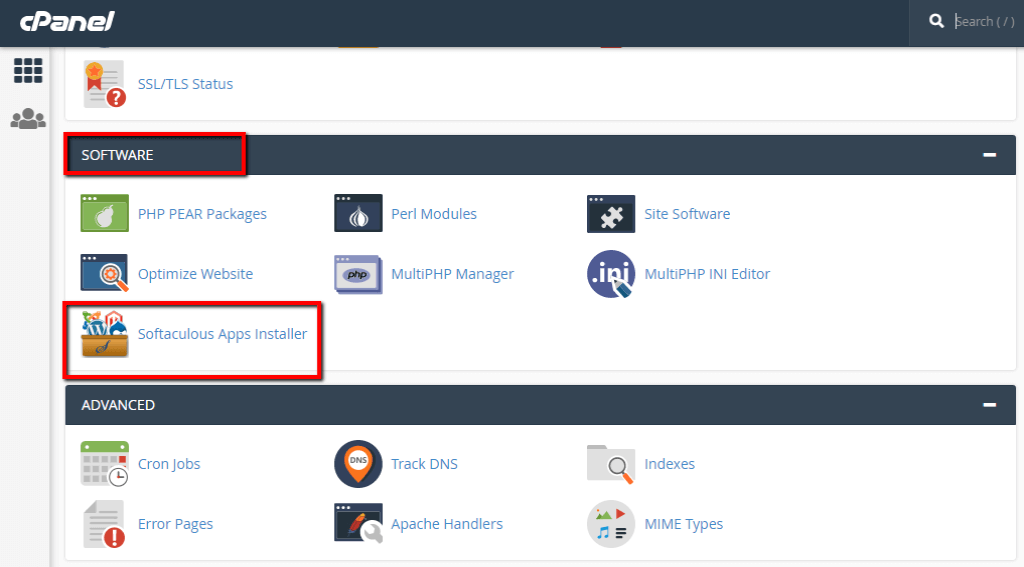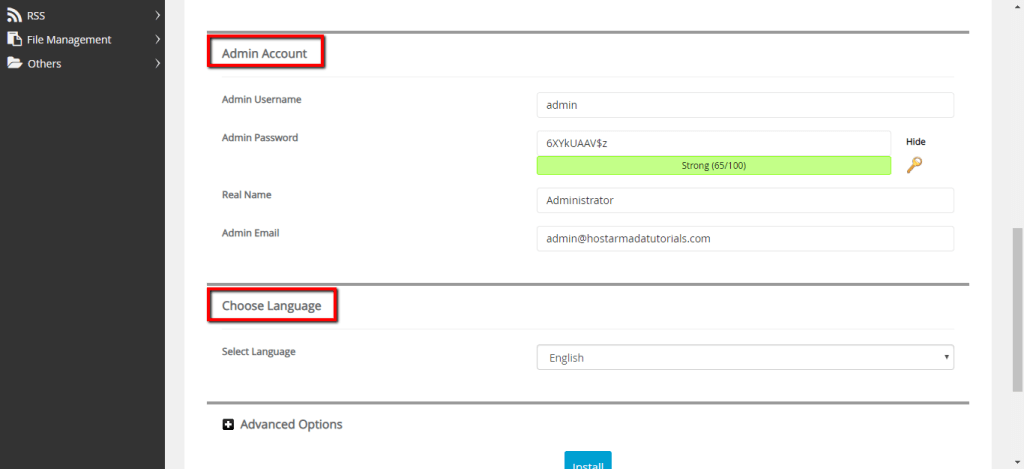Joomla is a free, open-source CMS based on PHP. With over one hundred and ten million downloads, Joomla is one of the most popular platforms for website development and management. In this tutorial, we will guide you on how to install Joomla via the Softaculous Auto Installer integrated into cPanel. Within a few simple steps, you will have your new website empowered by Joomla up and running.
For a start, we will need you to access your cPanel account. In case you are not sure how to achieve that, please find detailed instructions in our guide based on How to access the cPanel service.
Once you are logged in to your cPanel account, please navigate to the “Software” directory where you will be able to locate the “Softaculous Apps Installer”.

After you access the Softaculous Dashboard you will notice that Joomla is displayed under the “Top Scripts” section. You can directly click on it in order to access the Installation page. Alternatively, you can use the search bar available in the left-hand sidebar.

Once this is done you will be redirected to the application overview page and you will be ready to start with the installation.
Now that you have accessed the Joomla overview page, please click on the “Install Now” button to initiate the installation process.

Afterward, you will be redirected to the “Install” page where you will need to specify the required configuration information. As you will notice the page is split into few sections. In order to keep it consistent, we will review each of the sections one by one starting with the first “Software Setup” section.

The first thing you need to select is the installation version. At this point, Softaculous supports Joomla 2.5.28 and 3.9.14. We strongly recommend you to choose the latest available version unless you strickly require another one.
Next, you will need to determine the application URL settings:
Next are the “Site Settings” and “Database Settings” sections.

The “Site Settings” section includes the following two fields. Note that the information specified in here, can be changed anytime in the future:
Within the “Database Settings” section you will be able to import sample data by selecting the desired option from the dropdown menu.
Next - the “Admin Account” and “Choose Language” sections.

Intuitively, from the “Admin Account” section you will be able to configure your Admin details:
Within the “Choose Language” section you will have to select the default language for your Joomla website and Administrative area.
Following is the “Advanced Options” section which you may expand by clicking on the “+” sign.

From this section, you can customize the database assigned to your Joomla website. Note that these settings are optional, therefore you may just skip them.
You will be able to give your database a custom “Database Name” and change the database “Table Prefix”. You can disable the update notifications sent via email by ticking the checkbox. You can configure your preferences for the automated update functionality of your Joomla version. You can control the “Backup Location”, the frequency of the Softaculous “Automated Backups” and the “Backup Rotation”. Please note that these backups will be stored under your hosting account and they will demand available space. If you are using one of our shared hosting solutions HostArmada is already backing up your data and storing it on remote servers for enhanced security.
When you are ready, please click on the “Install” button to initiate the process and allow it with a few moments to be successfully completed.
Voalá! Joomla was successfully installed! In this final step, you will be provided with your website URL and your Joomla Administrative URL. Now you are ready to go ahead and explore them both.

Well, it was as simple as that. As we promised within a few mouse clicks you have a brand new Joomla-powered website. Now, most of it is in your hands. Put your creative thinking into work and develop a beautiful and successful website. We hope you have found our guide useful and easy to follow and we would like to welcome you to contact our Support Team in case you have run into any difficulties.

Sebahat is a young and bright woman who has become an invaluable part of our team. She started as a Customer Care Representative, mastering that role and, along the way, growing into a tech-savvy individual who is well acquainted with every support layer of the company. Driven by her aim to improve our customers’ experience constantly, she is committed to enhancing the extraordinary support we deliver.